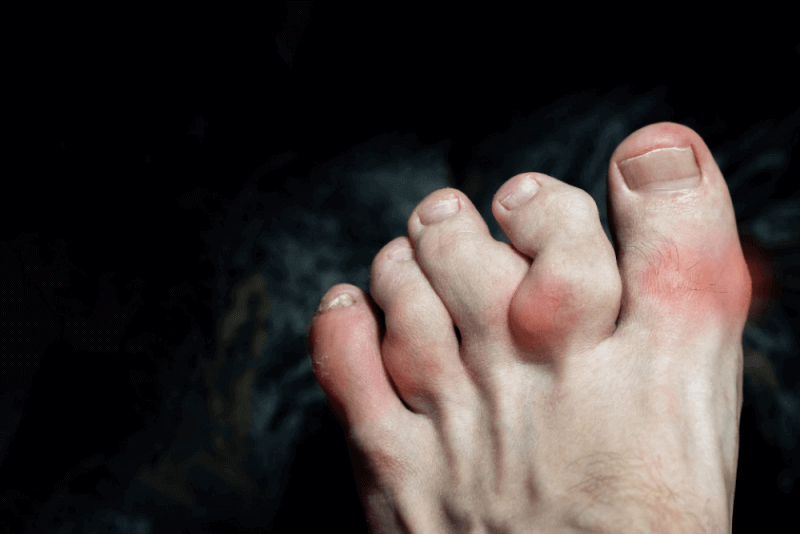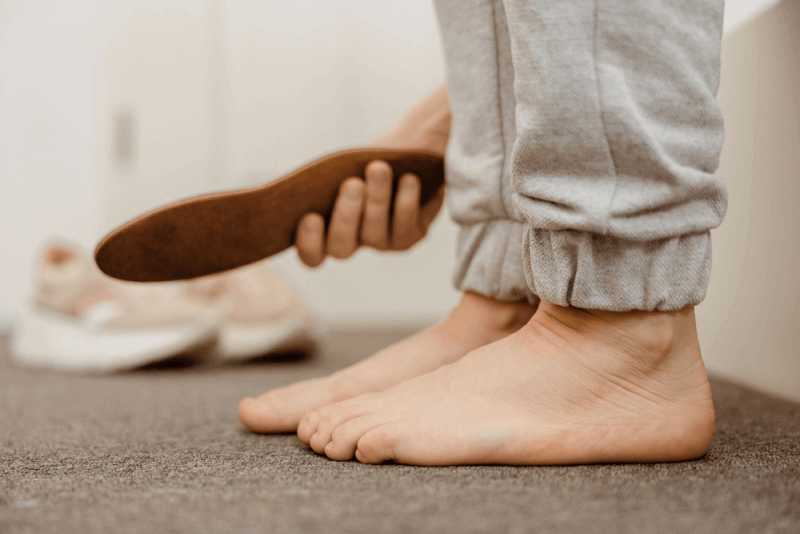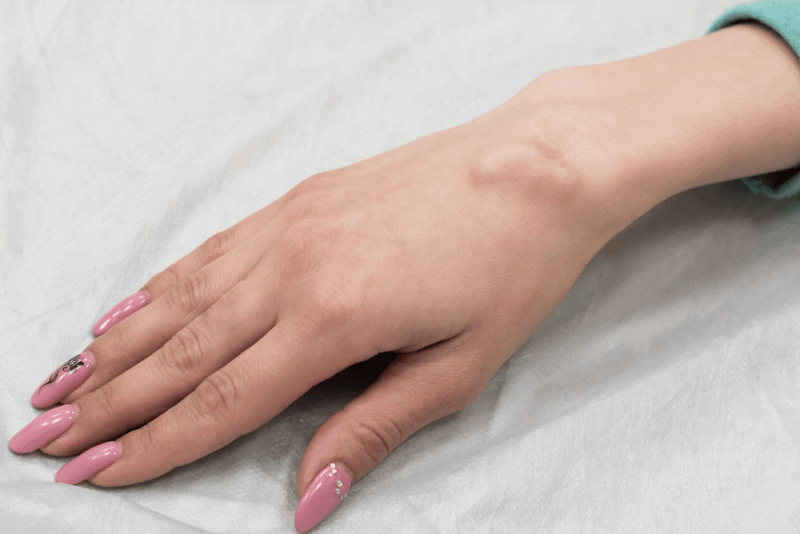30 Second Summary
- A slipped disc is a slippage of one or more vertebrae of the spine.
- Slipped discs can occur as a result of weakening of the discs between the vertebrae, degeneration and various injuries.
- Symptoms of a Spondylolisthesis include pain, numbness, tingling, muscle weakness and restricted movement.
- The treatment of Spondylolisthesis varies depending on the severity of the symptoms and the degree of slippage. In mild cases, rest, physical therapy and medication can be applied. Severe cases may require surgical intervention.
What is a Spondylolisthesis?
Slipped disc is a medical problem that occurs in the spine and lumbar regions. In the case of a Spondylolisthesis, one or more vertebrae of the spine may be displaced. In addition, slipped discs are usually caused by weakening of the discs between the vertebrae, degeneration and various injuries.
Slipped discs are often recognized by chance. However, it is also known that patients suffer from back slippage through various symptoms. The problem of slipped discs can also be divided into different types such as spondylolisthesis, spondylolysis and slipped disc. However, the treatment methods to be established are determined depending on the severity of the symptoms and the severity of the Spondylolisthesis condition. Emergency surgical interventions are essential for serious cases.
Diagnostic Criteria for Lumbar Spondylolisthesis
Diagnosis of slipped discs must be carried out by specialist doctors and in professional clinical settings. Some imaging tests are also preferred when determining these criteria. The following criteria are usually evaluated for the diagnosis of a Spondylolisthesis:
-
Clinical Observation
The specialist can diagnose slipped discs by evaluating the patient's symptoms such as low back pain, back pain, numbness in certain areas and weakness in the legs.
-
Radiological Imaging
X-rays are commonly used to diagnose the problem of slipped discs. X-rays make it possible to assess the condition of the spine and vertebrae and determine the degree of slippage.
-
Computerized Tomography
Computed tomography scans allow for more detailed imaging and provide a more detailed analysis of the spinal bones and discs.
-
Magnetic Resonance Imaging
Magnetic resonance imaging allows a detailed evaluation of the spine and soft tissues. This method is also preferred to identify the cause of a Spondylolisthesis and to evaluate nerve compression.
Symptoms of Spondylolisthesis
Symptoms of slipped discs will often differ from person to person. In some patients, symptoms may be mild and almost non-existent, while in others they may be more pronounced. The most common symptoms of a Spondylolisthesis are:
-
Low Back Pain
Low back pain is one of the first symptoms of a Spondylolisthesis problem. The pain is felt most intensely in the lumbar region, but can sometimes radiate to the buttocks and thighs. The painful area can also become more problematic as activity increases or after sitting for long periods of time.
-
Back Pain
Slipped discs can also cause back pain symptoms. The pain radiates along the spine and can even appear in the neck and chest.
-
Numbness and Tingling
A Spondylolisthesis, which puts pressure on the spinal cord or nerve roots, can also cause numbness and tingling in certain areas. This is usually felt in the legs and feet.
-
Muscle Difficulty
A Spondylolisthesis can cause muscle weakness in the legs due to compression of the spinal cord and nerve roots. This leads to difficulty walking and balance problems.
-
Limitation of movement in the legs or feet
As slipped discs can cause compression of the spinal cord, patients may experience limitation of movement in the legs or feet.
-
Standing or Walking Problems
In advanced stages of slipped discs, it may be difficult to stand or walk. Instability, limping and weakness are also common.
Causes of Slipped Waist
Slipped discs can occur in people due to different reasons. Some common causes of slipped discs are as follows:
-
Spondylolysis
Spondylolysis is one of the most common causes of Spondylolisthesis. Spondylolysis is associated with a stress fracture or weakening of the area at the back of the vertebrae called the pars interarticularis. This can often be attributed to a congenital weakness, injury or overstretching.
-
Disc Degeneration
Degeneration of the spinal discs is another common cause of slipped discs. With disc weakening, the stability between the vertebrae decreases and a slipped disc can occur.
-
Spinal Cord Injuries
A direct trauma or injury to the spine can cause it to slip out of place. These types of injuries occur as a result of accidents, falls or sports activities.
-
Spine Surgery
In rare cases, a Spondylolisthesis may occur as a result of previous spinal surgery. In this case, surgical intervention may be required again.
-
Diseases
Some diseases are also known to cause Spondylolisthesis. For example, conditions such as spondylosis or ankylosing spondylitis lead to displacement of the vertebrae.
Treatment Methods for Slipped Waist
Treatments for slipped discs vary depending on the severity of the symptoms, the degree of slippage, the patient's age and general health. However, the generally preferred lumbar slip treatment methods are as follows:
-
Conservative Treatment
Conservative treatment methods are recommended for Spondylolisthesis problems with mild symptoms. This treatment approach generally includes rest, physical therapy, pain management and exercise.
-
Epidural Steroid Injections
For patients experiencing intense pain, corticosteroids are injected around the spinal cord to reduce pain.
-
Surgical Intervention
It is used when the slipped disc is quite severe and the symptoms do not respond to other treatments.
Summary of Surgery
Duration of Surgery 2-6 Hours
Anesthesia Method: General
Hospitalization Period: 3-7 Days
Return to Work Period: 2-4 Weeks to 3-6 Months
Exercises for Spondylolisthesis
For patients with slipped discs, exercises to strengthen the spine, increase stability and manage symptoms correctly will help reduce symptoms. However, since each individual's condition is different, it is imperative to consult a surgeon before starting an exercise program. Generally preferred exercises for Spondylolisthesis problem:
-
Pelvic Curves
This is the position in which the knees are bent while lying on the back. It is applied by slowly lifting the pelvic region upwards and then lowering it again. With this exercise, muscles that are experiencing weakness also begin to gain sensation.
-
Bridge Exercises
In this exercise, you first lie on your back, bend your knees and place the soles of your feet on the floor. Then the hip is lifted upwards and a bridge shape is created.
-
Folding Exercises
For this exercise, lie on your back, bend your knees and join your hands behind your head. Then the head and shoulder are slightly raised and the knee is touched against the elbow.
-
Prone Plank
In this exercise, patients lie face down and rest on their elbows. They are supported on the lower part of their elbows and the tips of their toes. They then stand in a straight line on their torso and stay like this for a certain period of time.
-
Swimming
Backstroke and various water aerobic activities support the spine and help to strengthen the muscles and restore spinal health.
Lumbar Spondylolisthesis Surgery
Slipped disc surgery is performed when the condition is severe and the symptoms do not respond to any treatment. This is an intervention to stabilize the spine, reduce nerve pressure and relieve symptoms. Commonly preferred surgical interventions for Spondylolisthesis are as follows:
-
Spine Fusion
During this surgical operation, metal implants such as screws, plates and rods are used to replace and stabilize the displaced vertebrae. The vertebrae are aligned and stabilized. This also stops the vertebrae from slipping and stabilizes the spine.
-
Discectomy
If the slipped disc is associated with disc degeneration, a discectomy can be performed. In this procedure, the slipped disc is completely removed and the nerve pressure is reduced.
-
Decompression
If there is pressure on the nerve roots during Spondylolisthesis disc disease, the tissue and bones that compress the nerve roots are removed with decompression.
Recovery Process After Lumbar Spondylolisthesis Surgery
Lumbar slip surgery is performed because the complications do not respond to any treatment method. It is also imperative that patients undergo a recovery period after the surgical operation. In this process, the general health status of the patient, the type of surgery and the people factors may change the factors to be considered after the surgery. However, in general, the issues to be taken into consideration after lumbar slip surgery are listed as follows:
- Length of hospital stay
- Pain management
- Activity restrictions
- Physical therapy and rehabilitation options
- Recovery process
- Complications
In Which Situations Is Lumbar Spondylolisthesis Surgery Performed?
Conditions that require surgical operation for Spondylolisthesis are generally as follows:
- Symptoms are severe enough to affect quality of life
- Severe displacement of the spinal cord
- Failure to respond to medications and traditional treatment methods
- Progression of Spondylolisthesis pain








